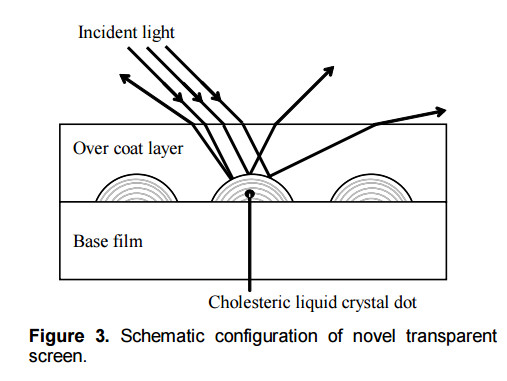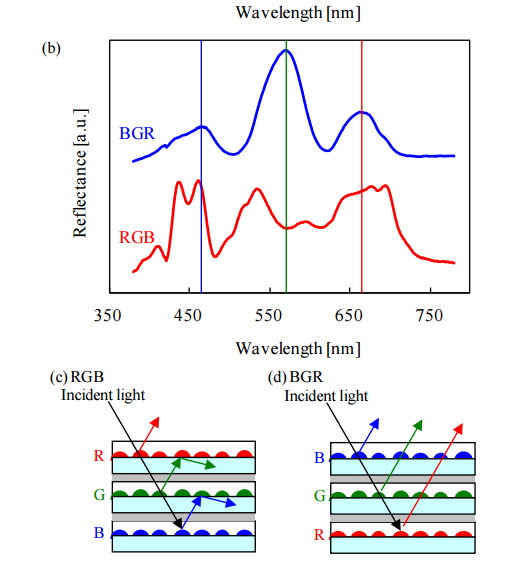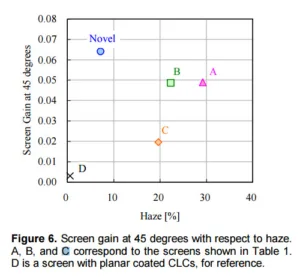Transparent screens for projection applications are not very common, but they can be quite effective for advertising, merchandising and increasingly, augmented reality applications such as Head Up Displays. At SID 2016, Fujifilm gave a paper (16-3) that described a new screen fabricated with Cholesteric Liquid Crystal (CLC) dots formed in spherical layers. It can be used for front or rear projection applications and offers high gain and low haze.
Transparent projection screens using various methods have been developed to date, but according to Fujifilm, as the reflection intensity is increased, so does haze. And, since they use forward scattering materials, they are limited to rear-projection configurations. The new screen from Fujifilm overcomes these limitations, offering a solution that can be used for front or rear projection. A short throw version of the screen is also in development.
The authors first explained some properties of CLC materials
- CLCs organize themselves into a helical layer structure
- CLC layers selectively reflect light of wavelength equal to the pitch of this helix
- Reflected light is circularly polarized in the same direction as the twisting direction of the helix
- The wavelength of the selective reflection (the pitch of the helix) can be adjusted by changing the kind or the amount of chiral agent
- The direction of this selective reflection depends on the direction of the CLC layers, not on the front surface shape
Given these characteristics, the solutions the researchers came up with was a series of spherically shaped CLC dots. Dots are fabricated by depositing successive layers using ink jet printing or a spray coating machine. A spherical shape is formed because the surface tension is dominant over gravity, said the authors.
The screen is composed of three layers to reflect red, green and blue light. As noted above, changing the chiral agent allows for this spectral reflectivity tuning. The dots are about 30 microns in diameter and 6 microns in height and spaced on 60 micron centers (423 ppi). An overcoating layer with the same index as the dots helps to reduce scattering.
How incoming light is manipulated to reflect back toward to viewer, is shown in the schematic below. Also shown is the reflected spectrum for two different layer combinations. The BGR construction has higher overall reflectivity with a spike in the green. The RGB combination peaks in the blue and red, so seems less attractive.
Note that this screen is ideal for RGB LED or laser projectors where the wavelengths of the light are fairly narrow so the CLCs can be tuned to reflect only these wavelengths and reject ambient light. Further increases in contract can be obtained by circularly polarizing the projector light to match the screen.


Finally, the authors them measured and compared their new novel screen’s haze, gain at 45 degrees and transmittance compared to three other particle scattering type screens A, B and C (screen names were not identified).

We did not get a chance to ask when this might be commercialized, but hopefully soon, as it seems to offer some compelling performance. –CC

